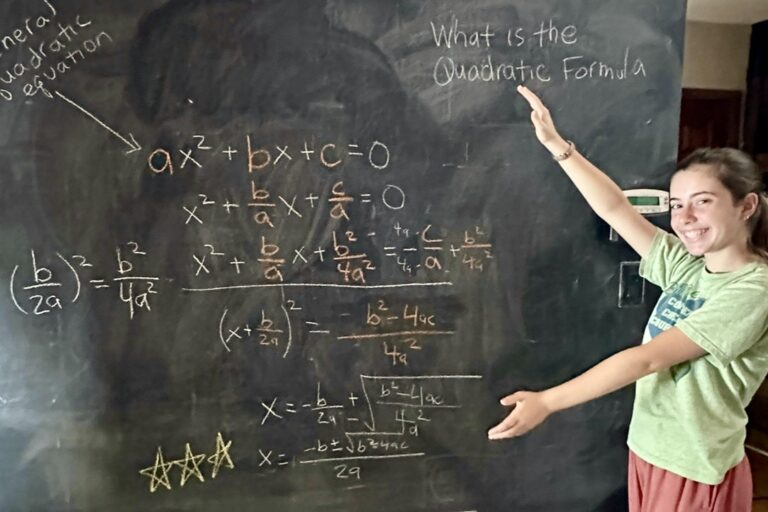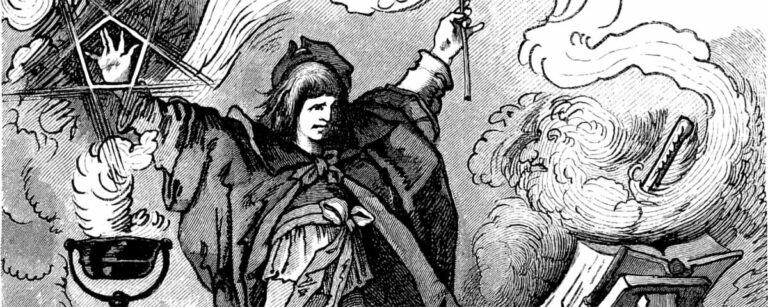Please note, this article is not intended as legal advice in any way.
In most states there are a variety of ways to pursue the education a homeschool parent prefers, please take the time to learn what applies to you.
8-10 minute read
Planning for post-secondary education in homeschool
Homeschooling is a choice that more and more families all over the world are making for their children’s education. As parents try to create unique learning experiences that align with their values, homeschooling gives them freedom and flexibility in the curriculum and routine. But as homeschoolers get closer to graduating, the issue of transcripts and credit becomes more important and pressing, especially for those who want to go to college. For most college-bound homeschool high school students and parents, documenting their four years of work in credits on a transcript seems like an intimidating undertaking.
Although it seems daunting, there are various approaches and solutions that make it easier than you may think.
Below are some resources and advice to help guide you toward successfully making the journey from homeschool to college, or other post-graduation pursuits. The earlier you prepare yourself with the most relevant information to your area and situation, the better you will be able to keep track of the work as you go.
Every state in the US, and area of the world, has its own rules regulating the homeschool experience. Homeschooled graduates earn a legal high school diploma in nearly all states, according to the laws there, so you will want a transcript documenting the credits earned. That diploma can be used for college admission, scholarships, employment, and military service. Even if the plan is not to attend college or a trade school right away, prepare those records now, as that may change down the road.
Credits: What is the Carnegie Unit?
The Carnegie unit is a time-based measurement of ‘secondary educational attainment’, used by American colleges and universities. In essence it measures the class or contact hours with an instructor over the year. I find the history of anything interesting, this being no exception.
It was originally defined as: a class meeting in one subject for 120 hours– one hour, on five days per week, for 24 weeks a year. Fourteen units were deemed to constitute the minimum amount of preparation that could be interpreted as “four years of academic or high school preparation.” School calendars and schedules have evolved, using semesters, trimesters, summer programs, etc, but the concept and general definition of the Carnegie Unit has remained the cornerstone in the evaluation and comparison of students entering college.
Although 120 hours is the general standard, different states, schools, or homeschools may define their Carnegie Units differently. I have heard of institutions that require 180 hours for one credit, while another only 80 hours. Science courses with labs may offer 140-180 hours for one credit due to the extra lab time.
Learn more about the credits at Jamie York Academy here.
Questions?
At the Jamie York Academy, parents are integral partners in the learning process, and are the final arbiters of the reports for the work done by their students. Our teachers provide the course summary and any evaluations (test scores, etc), with the understanding that the parent is able to further customize them to most accurately reflect the individualized nature of their learning process. A typical semester of the Jamie York Math Academy will come out to 0.93 credits (see here), in our partnership, you have the flexibility to easily augment that.
This is a plus for many homeschool families. It allows the parent to ensure the report includes any additional work completed to meet the requirements of local jurisdictions or overseeing institutions. Keep in mind, we are a learning support resource, not an umbrella school, so you keep all the freedom in your homeschool curriculum, as well as the responsibility for it overall.
Transcripts
The high school transcript is the student’s official academic record. With regard to college admissions, it is shared with colleges and universities to show the student’s academic readiness to do work at the college level, or to verify that they have met the base admission criteria for the college or university.
The best method for tracking records, grades, and work, is the one that you will actually use!
It’s a good idea to track or save everything your homeschooler is doing from about 8th grade on, 9th grade for sure. Optimally, you will have some kind of written overview of the material covered and activities completed, including keeping the paperwork and any files from each class should you need them later. In the digital age, this is not so difficult.
When the time comes to create homeschool high school transcripts, your record-keeping should make it a simple process to enter the needed information into a transcript form or template, if you are doing it yourself. It’s easiest if you keep up with the courses and grades as you go rather than waiting until you need to submit a transcript to start working on it.
Remember, a transcript’s main job is to communicate the student’s readiness for college by showing that they have completed all of the requirements for admission. So, a homeschool transcript should include descriptive course names that appropriately reflect the difficulty level of the work.
You make your own in a spreadsheet or word-processing document,or download a template online. Your official transcript can be organized by year, or subject. In any case, it should include at least the following information:
- The words “Official Transcript”
- Student Information (name, birth date, address, parent’s names, gender)
- School Information (name, address)
- Names of Classes (specific and descriptive, but not overdone)
- Grades earned for each class
- Credits earned for each class
- Projected Graduation Date (or actual graduation date)
- Current GPA
- Principal’s Signature and Date (you, parent, are the principal)
- Optionally
- Course Completion Dates
- Grading Scale
- National Test Scores
- Brief Activity List
Be sure to check the requirements of the college your student is applying to before submitting your transcript.
Umbrella Schools
An umbrella school is a type of private or independent school for homeschoolers. Instead of submitting records to the school district, the homeschooling family enrolls with an umbrella school and submits records to them. Even though they are being educated at home, they are then considered private schooled students. It can be a way to give some outside weight to your transcript.
The umbrella school is generally providing their official transcripts based on your work.
In general, the purpose of an independent umbrella school is to help homeschool families comply with compulsory school attendance, record keeping, and testing laws. Note that when you choose this option, you are choosing to abide by the regulations of the individual school, rather than your school district, or your local homeschool requirements. In many cases, there is no actual school building and the decisions about your curriculum, how and when children are taught, can still be yours, so it can be well-suited to the homeschooler.
Not all homeschooling families use umbrella schools, and you don’t need one simply for creating a transcript, however, it can be advantageous. For example, in a state with overly strict homeschool regulations, or where your educational values or philosophies regarding testing and curricula requirements diverge from the state, it can give your family more freedom in their education choices. Umbrella schools also provide some reassurance, though no guarantee, that your high school credits remain valid or are not lost should you need or choose to transfer into a public school part way through high school.
Some downsides to the umbrella school model are the cost, and a loss of freedom. You will have to play by their game and give up some freedom, since they are taking responsibility for the credits and transcript, and may dictate certain requirements.
In some cases a college admissions officer may prefer your homeschool transcript to an institutional one. It may force them to slow down, dive in, actually read through the courses and appreciate the uniqueness of your work.
Graduation– the “finish line”
What you will need to do to prepare for graduation depends on your post-high school goals. As the parent of a middle schooler, or early high-schooler, graduation may seem out of sight, and out of mind. But it’s worth doing some homework early to help prepare. The college-bound student is in the situation most sensitive to transcripts and credit.
To have a homeschool high school transcript be competitive with transcripts from local school districts or private schools, homeschooling parents might review the graduation requirements of their local schools. They may also reach out to prospective post-secondary institutions they are considering to find out what their enrollment requirements are, then plan high school course loads with these guidelines in mind.
One of our parents says, “To have a very competitive transcript, our family felt it useful to look beyond the local public school system and look to the more elite schools and use their requirements to inform course selection and credit totals.”
Also, if Waldorf education is a factor, Waldorf-inspired homeschoolers might consider the graduation requirements of established Waldorf schools as a frame of reference. Graduation requirements for most high schools are usually readily available online, or a phone call away, and that is a good place to start. Many Waldorf schools are accredited with their states, and therefore using their graduation requirements is a good resource.
For the homeschooled high school transcript, the parent is lawfully the responsible person to write the transcript. They can hire out to a service or umbrella school to provide assistance, but ultimately the responsibility is on the parents.
College
Some colleges seek out homeschooled students specifically, recognizing their unique skill set:
- a sense of responsibility for their learning,
- real world learning experience,
- comfort advocating for themselves with adults,
- comfort working in and with mixed age groups,
- grit, drive, and often an insatiable curiosity and love for learning.
If college is the goal, there are several paths to get there. Though it may be far from top of mind, an ideal time would be at the end of middle school just to get a feel for what courses the student would need during high school to align with a transition into college. This could mean simply checking the state college or university to get a baseline understanding. However, for some families the transcript is an afterthought. Though it’s certainly doable to piece together four years of learning in retrospect, it’s a lot more work.
Traditional college prep track & SAT/ACT
Rigorous, traditional coursework and standardized testing such as the SAT/ACT is the way to college many of us parents and older folks know. Though, as you may be aware, some colleges are now becoming SAT ‘optional’ and not requiring SAT testing. Course, credit, and testing entrance requirements vary from one college to the next, so reaching out to prospective schools is a great place to start.
Dual or Concurrent Enrollment
Some high schoolers have the ability to enroll in community college courses while in high school and earn dual credit. Those credits may count toward an Associate’s Degree or career training certificate so that when they graduate high school they may already be matriculated into community college. Also, in some states, that community college credit is automatically accepted at the state universities so they are essentially already partway through their college journey. Some of our parents tell us that many homeschoolers use this path, as it is simple and saves time and cost.
Independent Evaluation
When formal approval isn’t possible, some homeschoolers choose to have an educational professional do an evaluation of their child on their own. In an independent evaluation, a teacher or educational consultant looks at the student’s schoolwork and gives an opinion on how well they did. Even though these reviews are not the same as accreditation, they can give a student’s application more weight.
Demonstrating Skills– Portfolios, Interviews
Homeschoolers can also show what they know and what they can do in different ways, like through project portfolios, articles, or interviews. Some colleges are becoming more aware of the value of non-traditional ways to test students, especially those who were homeschooled or went to a different type of school.
Gap Year, Start a Business, Self-directed Study, Trade Schools
Of course, there are many paths for a young person to take post-secondary education. Taking some time to understand those as a parent can help you to guide or hear the needs of your student at home, and help prepare a high school education that supports those goals.
We’d love to hear from you!
Have some stories to tell? Essential resources you have used and recommend? Tell us about them! We want to deepen and expand this resource hub for all families.
Resources
Information about the laws and rules for homeschooling in each state, such as what is needed for transcripts and accreditation: Homeschool Legal Defence Association https://hslda.org/
Umbrella Schools some of our parents have used














